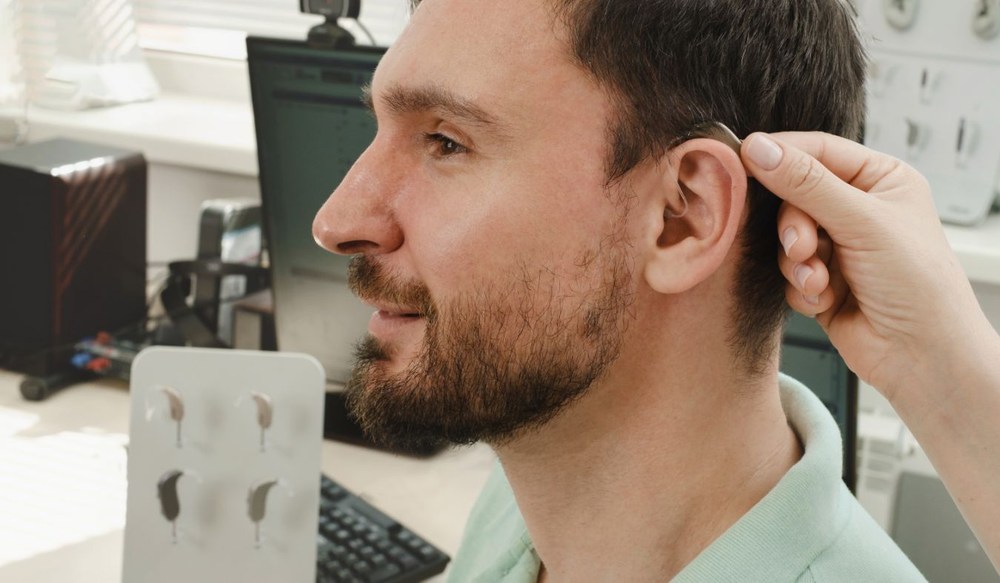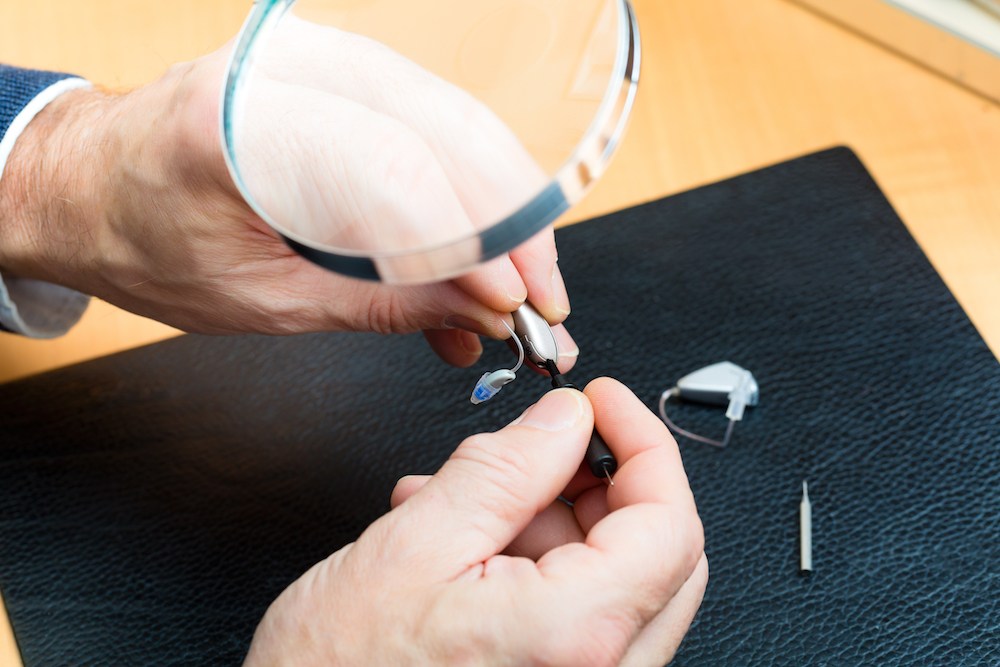The Future of Hearing Aid Personalization
Hearing aid technology is moving toward treating each person’s

By: admin | July 24, 2024
Hearing aids and ear health are tightly intertwined, playing a crucial role in maintaining excellent auditory function. While it may seem like a straightforward topic, its importance cannot be overstated as it directly impacts the quality of life for those using hearing aids. These devices, while key in enhancing sound perception, can sometimes increase the risk of ear infections if not managed properly. Thus, learning how to prevent such complications is critical. This knowledge is a potent tool in preserving not just the longevity and effectiveness of your hearing aid but also ensuring your overall ear health.
The connection between hearing aids and ear health is indeed a vital aspect of maintaining optimal auditory function.
First off, let’s talk about the positives. Hearing aids can dramatically enhance your ability to interact with others, enriching your social experiences and overall quality of life. They can also help you detect sounds that might otherwise go unnoticed, such as alarms or warning signals, thereby enhancing your safety. However, it’s important to note that while these devices offer numerous benefits, they require proper care and maintenance to avoid potential drawbacks.
On the flip side, a common concern for many hearing aid wearers is the risk of ear infections. This is primarily due to the device being in direct contact with your ear canal for extended periods. If not cleaned regularly or fitted correctly, hearing aids can trap moisture and promote bacterial growth within the ear canal leading to infections.
However, don’t let this deter you from using a hearing aid if you need one. By adopting good hygiene practices like cleaning your device regularly and ensuring it fits well within your ear canal can significantly reduce this risk. It’s also recommended to have regular check-ups with an audiologist who can provide expert advice on maintaining both your device’s longevity and overall ear health.
Being well-informed is key when it comes to managing your health. By understanding how best to care for your hearing aid and ears, you’re taking a proactive approach towards preventing infections and ensuring optimal auditory function.
Have you ever wondered how hearing aids might affect your ear’s well-being? It’s a question worth considering, especially if you’re using these devices regularly.
Hearing aids, while designed to enhance your auditory experience, can sometimes cause minor issues if not used correctly. For instance, an ill-fitting device could cause discomfort or even lead to skin irritation in the ear canal. Additionally, as these devices are worn for extended periods within the ear canal, they can trap moisture and create an environment conducive to bacterial growth.
But there’s good news! These potential issues can be easily managed with proper care and hygiene practices. Regular cleaning of your hearing aids, ensuring they fit well within your ear canal and having routine check-ups with a specialist are all effective ways to mitigate these risks. So, while hearing aids may have some impact on your ear’s well-being, with the right precautions in place, you can enjoy the benefits of improved hearing without worry.
Ear infections are common ailments that occur when viruses or bacteria cause inflammation and fluid buildup in the ear. These infections can affect different parts of the ear, including the outer ear (otitis externa), middle ear (otitis media) and inner ear (otitis interna). Each type of ear infection has distinct characteristics, symptoms and causes.
Ear infections typically develop when the Eustachian tube, which connects the middle ear to the back of the throat, becomes blocked or swollen. This blockage can trap fluid in the middle ear, creating a breeding ground for bacteria and viruses. Infections can also develop from an existing upper respiratory infection, cold, flu or allergies that cause swelling and congestion in the nasal passages and throat, affecting the Eustachian tube’s function.
The symptoms of an ear infection can vary depending on the part of the ear affected and the severity of the infection. Common symptoms include ear pain, which can range from mild discomfort to severe pain, often worsening when lying down. Fluid drainage from the ear is another symptom, indicating a perforated eardrum in some cases. Temporary hearing loss can occur due to fluid buildup in the middle ear, and there may also be a feeling of pressure or fullness. Fever is particularly common in children, who may also become more irritable and fussier. Infections that affect the inner ear can cause dizziness and balance issues.
Ear infections are primarily caused by bacteria and viruses. The most common causes include upper respiratory infections such as colds, flu and sinus infections, which lead to ear infections by causing swelling and congestion that can block the Eustachian tubes. Allergic reactions can also cause inflammation and mucus production, which can block the Eustachian tubes. Excessive earwax can trap bacteria and viruses, leading to infection. Prolonged exposure to water can introduce bacteria into the ear canal, leading to swimmer’s ear (otitis externa). In children, the Eustachian tubes are shorter and more horizontal, making them more prone to blockages and infections. In adults, smoking and other irritants can affect the tube’s function.
Preventive measures include practicing good hygiene, managing allergies, avoiding smoking and keeping ears dry and clean. Treating upper respiratory infections promptly and keeping vaccinations up to date can also help reduce the risk of ear infections. If an ear infection is suspected, it’s essential to seek medical advice for proper diagnosis and treatment, which may include antibiotics for bacterial infections, pain relief and in some cases, minor surgical procedures to drain fluid and relieve pressure.
Moving on to a vital aspect of hearing aid use – proper cleaning and maintenance. This is a necessity not just for the longevity of your device, but also for maintaining optimal ear health. Did you know that according to a study published in the Journal of the American Academy of Audiology, up to 60% of hearing aid wearers do not clean their devices as often as they should?
Ensuring your hearing aids are clean is an effective way to prevent potential ear infections. A simple daily routine can help remove any accumulated debris or moisture that could promote bacterial growth in your ear canal. This routine doesn’t have to be complicated; it could be as straightforward as wiping your device with a dry cloth and using a brush to clean the microphone ports.
In addition to cleaning, regular maintenance checks with an audiologist can help identify any issues early on and ensure your device is functioning optimally. Taking care of your hearing aids is not just about extending their lifespan – it’s about protecting your ears too!
Maintaining clean hearing aids is essential, and fortunately, you don’t need to gather individual supplies on your own. Special cleaning kits are available that include everything you need. These kits, which can be purchased where you got your hearing aids or found easily online, come with the necessary cleaning agents and tools.
A typical cleaning kit will have products that make it easy to remove water and wax from your hearing aids. You’ll also find wipes that help dry the aids and ensure no cleaning agent residue is left behind. The aim is to ensure your hearing aids are thoroughly clean and sterile before you place them back in your ears.
A good hearing aid cleaning kit should contain:
After brushing, wipe the hearing aids with a soft cloth to remove any remaining particles and to dry the surface. If your hearing aids have ear molds, remove them and clean them separately with mild soap and water. Ensure they are completely dry before reattaching them.
For stubborn wax buildup, use the pick included in your cleaning kit. Be gentle to avoid damaging the delicate parts of your hearing aids. Regularly check and replace the wax filters or guards to keep your devices functioning properly.
Water and hearing aids don’t mix well. It’s essential to remove your hearing aids before bathing, swimming or performing tasks that involve a lot of water. If your hearing aids do get wet, it’s crucial to dry them immediately. Use your cleaning kit to clear out any water that may have collected in the vents, tubing or around the battery door casing. Wipe down the entire aid to ensure it is completely dry.
To keep your hearing aids moisture-free, use a hearing aid dryer or dehumidifier. These devices help remove unwanted moisture from within the hearing aids. Finally, use a clean, dry cloth to ensure your outer ear canal is dry before inserting your hearing aids.
After a day of enhancing your auditory experiences, where do you place your hearing aids? The answer to this question plays a significant role in avoiding contamination and ensuring the longevity of your devices. Safe storage practices are as important as regular cleaning in maintaining the optimal performance of your hearing aids.
A clean, dry and secure location is ideal for storing your hearing aids when not in use. Here are some tips:
Professional cleaning can also help extend the life of your hearing aids. Over time, debris and moisture can build up in hard-to-reach areas, potentially causing damage or affecting the performance of the device. Regular professional cleanings can prevent this buildup, ensuring that your hearing aids continue to work effectively for longer.
During a professional cleaning session, the specialist can also check for any minor issues that may not be noticeable at home. Early detection of these issues allows for timely repairs which could prevent more significant problems down the line. While home cleaning is important, the importance of regular professional cleanings for your hearing aids should never be underestimated!
At HEARINC, our team is here to support you every step of the way. Whether you need advice on cleaning your device, ensuring it fits well within your ear canal or if you’re experiencing symptoms that may indicate an infection – we’re here to help.
To schedule a consultation at our Akron, OH location, please call us at (330) 752-6763. If North Canton is more convenient for you, reach out at (234) 356-3071. We look forward to assisting you on your path towards better ear health and enhanced auditory experiences.
Tags: benefits of hearing aids, hearing aid repair, hearing aid styles

Hearing aid technology is moving toward treating each person’s
By: admin | November 18, 2025

Children with hearing loss face obstacles that adults simply don’t
By: admin | September 24, 2025

When you lead an active life, your hearing aids need to keep up with you.
By: admin | May 23, 2025
